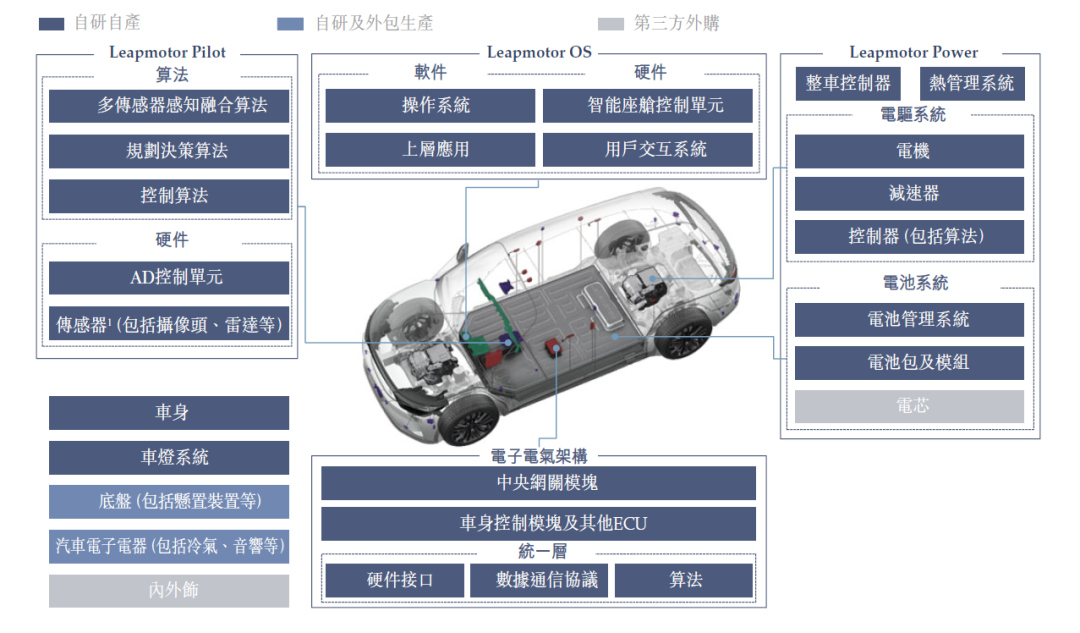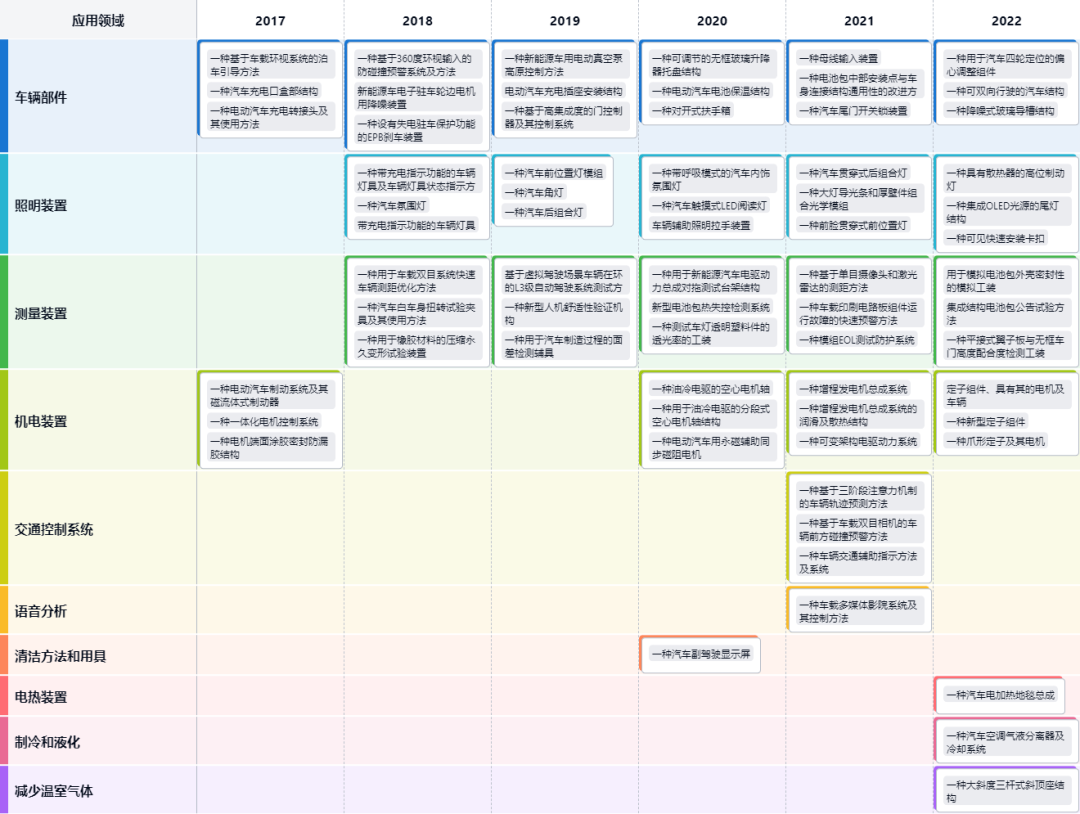A few days ago, Leap Motor, one of the new forces, landed on the Hong Kong Stock Exchange and attracted widespread attention. According to reports, in October this year, the delivery volume of Leapmotor vehicles reached 7,026 units, and the cumulative delivery this year has reached 94,628 units. According to its semi-annual report, as of June 30, 2022, Leapmotor’s revenue exceeded 5.082 billion yuan, a year-on-year increase of 479.4%.
The rapid growth of the zero-run car market is inseparable from the support of its technology research and development capabilities. According to the Zhihuiya Creativity Evaluation Platform, Zhejiang Leapao Technology Co., Ltd.’s scientific and technological innovation capability is rated as AA , and the current patent application reserve has exceeded 1,600.
Continuously improve the global self-research ability
According to Frost & Sullivan’s forecast, China’s new energy vehicle sales are expected to reach 10.6 million by 2026, with a compound annual growth rate of 26.0% from 2021 to 2026, and China’s market share will account for 43.9% of the global market.
Against the background of the vigorous development of the domestic new energy vehicle market, after several years of development, Leapmotor has become the fourth largest emerging electric vehicle company in China based on the sales volume in the Chinese market in 2021 and the first half of 2022.
Analyzing the reasons behind its market performance, global self-research ability is its important advantage. The so-called global self-research capability mainly refers to the ability of a new energy vehicle company to have self-developed core systems and all key software and hardware in electronic components, namely battery systems, electric drive systems, automatic driving systems and smart cockpits.
According to the Frost & Sullivan data mentioned in the data set after the hearing of its Hong Kong stock market, Leap Motor is currently the only emerging electric vehicle company in China with global independent research and development capabilities, and it is also the emerging electric vehicle company with the highest degree of vertical integration in China.
Specifically, all the key software and hardware in the core system and electronic components of Leapmotor’s self-developed smart electric vehicle have realized the unification of the underlying interface, algorithm and data communication protocol. Relying on the above capabilities, Leapmotor has built a platform-based electrical and electronic architecture and a complete vehicle architecture that can be highly reused among different electric models.

Figure: Leapmotor’s self-developed core system and electronic components
(Source: Leap Motor’s post-hearing collection)
The financial report shows that Leapmotor continues to increase R&D investment in the development of new platforms, new models and smart electric vehicle technology. In the first half of this year, the research and development investment of Leapmotor has reached 526 million yuan, a year-on-year increase of 103.2%, accounting for about 29.5% of revenue. At the same time, the company’s R&D team expanded to more than 1,800 people.
The continuous growth of R & D investment has promoted the continuous deepening of the company’s patent reserve pool. Zhihuiya data shows that Leapmotor and its affiliates currently have more than 1,600 patent applications, including nearly 800 invention patents.
According to the technology roadmap generated by Zhihuiya R&D information database, the core technology layout of Leapmotor is currently mainly concentrated in vehicle parts, lighting devices, measurement devices, electromechanical devices and many other subdivided application fields, covering key software and hardware of new energy vehicles technology.

Figure: Leap Motor Technology Roadmap (Source: Zhihuiya R&D Information Database)
Preemptive deployment of CTC technology
On September 28 this year, Leapmotor C01 started delivery, and the company immediately became the world’s first emerging electric vehicle company to adopt CTC technology on mass-produced models.
The full name of CTC is Cell to Chassis, that is, battery body integration technology. This technology aims to realize the integration of battery modules, battery trays and car bodies, break the boundary between battery modules, battery packs and complete vehicles, and promote cars to achieve longer mileage, faster acceleration, larger interior space, and Better crash safety and lower cost.
To put it simply, CTC technology is to place the battery cell directly in the vehicle chassis, improve the energy density of the battery by improving the space utilization rate, and highly integrate the battery, motor, electronic control, on-board charger and chassis, through the intelligent power domain The controller optimizes power distribution and reduces energy consumption. According to the forecast of Guohai Securities, the market space of my country’s battery-body integration technology may reach 850 billion yuan in 2030.
Compared with the previous generation technology, CTC technology requires battery manufacturers to intervene in model design at an earlier stage and cooperate with OEMs for in-depth development. This means that on the one hand, battery companies need to have stronger R&D and design capabilities; Chassis technical requirements are also higher. Leapmotor’s global self-research capabilities and vertical integration capabilities will effectively help it overcome the above-mentioned difficulties.
According to the data, Leapmotor uses CTC technology to comprehensively improve vehicle performance from four dimensions. First, in terms of space, the number of battery system components is reduced by 20%, the vertical space of the vehicle is increased by 10mm, and the battery layout space is increased by 14.5%, thereby reducing the weight of the vehicle and increasing space; second, in terms of battery life, it can improve The cruising range of the whole vehicle is 10%, and the charging speed is accelerated; thirdly, in terms of performance, the lightweight factor of the body reaches 2.4, which is increased by 20%, and the torsional strength of the body is increased by 25%; fourthly, in terms of safety, After nearly 30 tests such as bottom ball hitting, extrusion, thermal diffusion, etc., the safety of the battery is ensured.
In April this year, when Leapmotor released its CTC technology, it stated that it would open and share this technology for free. In the future, Leapmotor may effectively promote the application and development of this technology and achieve the goal of leading the market by virtue of its gradually perfected layout and free open source in the field of CTC technology.
Hot companies on Discovery
biospine-implants, revision-energy, tianjin-southeast-steel-structure, phyco-biotech, applegate-recovery, copar, buy-zopiclone-75-mg-tablets-online, texco-farben-produktions, real-tech-japan, neolegal, excelity-global-solutions, indecomm-global-services, godaddy, wilmar-international
